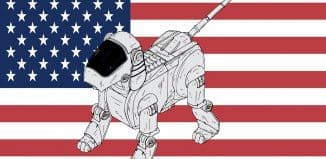The Future of Robotics: Israeli UGVs
This post is also available in:  עברית (Hebrew)
עברית (Hebrew)

According to Dr. Isabelle Okashi, the future of UGVs (unmanned ground vehicles) is similar to that of their airborne drone cousins: A combination of autonomous vehicle swarms, air, land and sea.
Dr. Isabelle Okashi directs the military robotics branch in the Lahav division of the Israel Aerospace Industries. She, along with her 100 co-workers, develop, manufacture and market unmanned, autonomous and robotic vehicles for the defense and civilian markets, the IDF and foreign armed forces, for a variety of applications.
One of IAI’s representative robots is the veteran Guardium, operational around the Gaza strip and defined by the IDF as the first operational autonomous system for defense, security, HLS and border protection. Many customers are anticipating the new generation of Guardium UGVs, developed by IAI and Elbit Systems subsidiary G-Nius.
While the Guardium defends the border, the Engineering Corps is evaluating a new engineering support robot – the Sahar. When Sahar becomes operational it will replace human soldiers in extremely dangerous patrol duties. The robot is based on the Bobcat tractor and is aimed at removing and neutralizing IEDs from patrol routes, ahead of the arrival of infantry soldiers. The Sahar was developed jointly by IAI and Qinetiq North America.

Dr, Okashi described the cooperation between future systems. The Sahar UGV, for example, will progress along its programmed route, while a UAV flies above, photographing, marking new paths and new obstacles using its cameras. “This is an example of cooperation enhancing vehicle autonomy.”
iHLS – Israel Homeland Security
Moving on to Rex, a load bearing robot escorting soldiers in the field. In addition to helping soldiers carry heavy equipment and logistic packages it can also help evacuate the wounded. It can be also used for HLS missions – helping intelligence gathering efforts, evacuating casualties and so on.
The soldier in the field can easily monitor the progress of the remote controlled Rex’s. Four soldiers can pick the robot up in order to bypass ground obstacles. An army unit can quickly set up a Rex convoy. Rex is powered by a combustion engine, but the next generation, as revealed by Dr. Okashi, uses a hybrid engine. The robot is currently undergoing evaluation in the IDF.
According to Dr. Okashi military robotics is a new field – it has a very short history and a future full of potential. “The market is still small, but growing quickly. Currently its estimated at 400 million dollars annually. As a result of lessons learned in Afghanistan and Iraq there’s a growing demand for small vehicles. The field will grow very quickly, and according to estimations 70% of the vehicles in the battlefields of the future will be robotic. Cooperation between autonomous systems across air, land and sea; swarms of UGVs and UAVs will replace soldiers in the field.”

Dr. Okashi is aware of the fact that unmanned aerial vehicles were the first autonomous vehicles in the market. Air came before ground. “And we’re still not seeing the great demand observed in the UAV fields, but it will come in the future. There are barriers, psychological and ethical, safety considerations (the ground is much more cluttered than the air) and certification problems.”
These days developing, manufacturing and marketing advanced autonomous systems is not enough. Because the area is so new and relatively unfamiliar manufacturers must also supply the associated tactics appropriate for its use, whether military or civilian. The tactics are based on client requirements, and according to Okashi “we, as a developer and manufacturer, have to transfer the system along with information on how to use it.”
Robots and military autonomous ground vehicles, which are already defending borders, battlefields and dangerous patrol routes, highlight the fact that human life is precious and when it comes to dangerous missions robots should be the ones facing the threat.






























